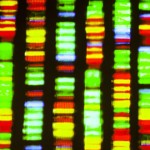Many investigators consider sJIA an autoinflammatory disease since it is not strongly associated with human leukocyte antigen (HLA) alleles, autoantibodies, or autoreactive T cells, but instead it is considered to involve dysregulation of the innate immune system. Although levels of circulating IL-1β are low or undetectable, Pascual and colleagues have provided convincing evidence for the role of IL-1β in the disease pathogenesis by demonstrating increased expression of IL-1–related genes in sJIA and showing that serum from sJIA patients induces production of IL-1β in peripheral blood mononuclear cells from healthy donors.7
Uncontrolled, open-label studies have shown that anakinra, an IL-1 receptor antagonist, improves systemic symptoms and laboratory features of inflammation in the majority of patients, but generally less impressive improvement is seen in the arthritis. An important study by Gattorno and colleagues identified two groups of patients: good responders, whose arthritis improved rapidly within the first week of treatment, and incomplete or nonresponders, whose arthritis either did not improve significantly or improved transiently with early recurrence.8 There is only one published controlled clinical trial of anakinra, the ANAJIS trial, in which 24 patients with sJIA that was steroid dependent were randomized to receive anakinra 1 mg/kg/day by subcutaneous injection or placebo.9 Eight of 12 patients (67%) who received anakinra met the primary outcome of a modified pediatric ACR 30 response after one month, compared with only one of 12 patients (8%) who received placebo. Modified pediatric ACR 50 and pediatric ACR 70 responses were achieved by 58% and 42% of patients, respectively.
After one month, 10 of the patients who had been treated with placebo and were considered nonresponders received anakinra and achieved a modified pediatric ACR 30 response after one month of treatment. However, at the end of the second month of treatment with anakinra, seven of the eight original responders at month one became nonresponders. Of the entire study group of 24 patients, only six out of 17 (35%) who received anakinra were considered responders after six months. After one year of treatment with anakinra, seven out of 16 (44%) were considered responders. Six of these patients had inactive disease and had been completely weaned off systemic corticosteroids.
It has been suggested that initiation of anakinra early in the disease course may improve outcome. In a report of 16 corticosteroid-naive patients with sJIA, 14 out of 16 responded to anakinra, the majority of patients achieving a pediatric ACR 90 response within three weeks of treatment.10 Another series reported the use of anakinra as part of the initial DMARD regimen in 46 patients with sJIA.11 Two-thirds of patients were on systemic corticosteroids, with or without other DMARDs. Fifty-nine percent had an excellent (“complete”) response, with almost all patients showing rapid improvements in fever and rash. There was a slower response of the arthritis to treatment, with persistent synovitis in 39% of patients at 30 days, 27% of patients at three months, and 15% of patients at six months. Inflammatory markers normalized in most patients with one month. Interestingly, 10 of the 46 patients received anakinra without steroids or other DMARDs.

